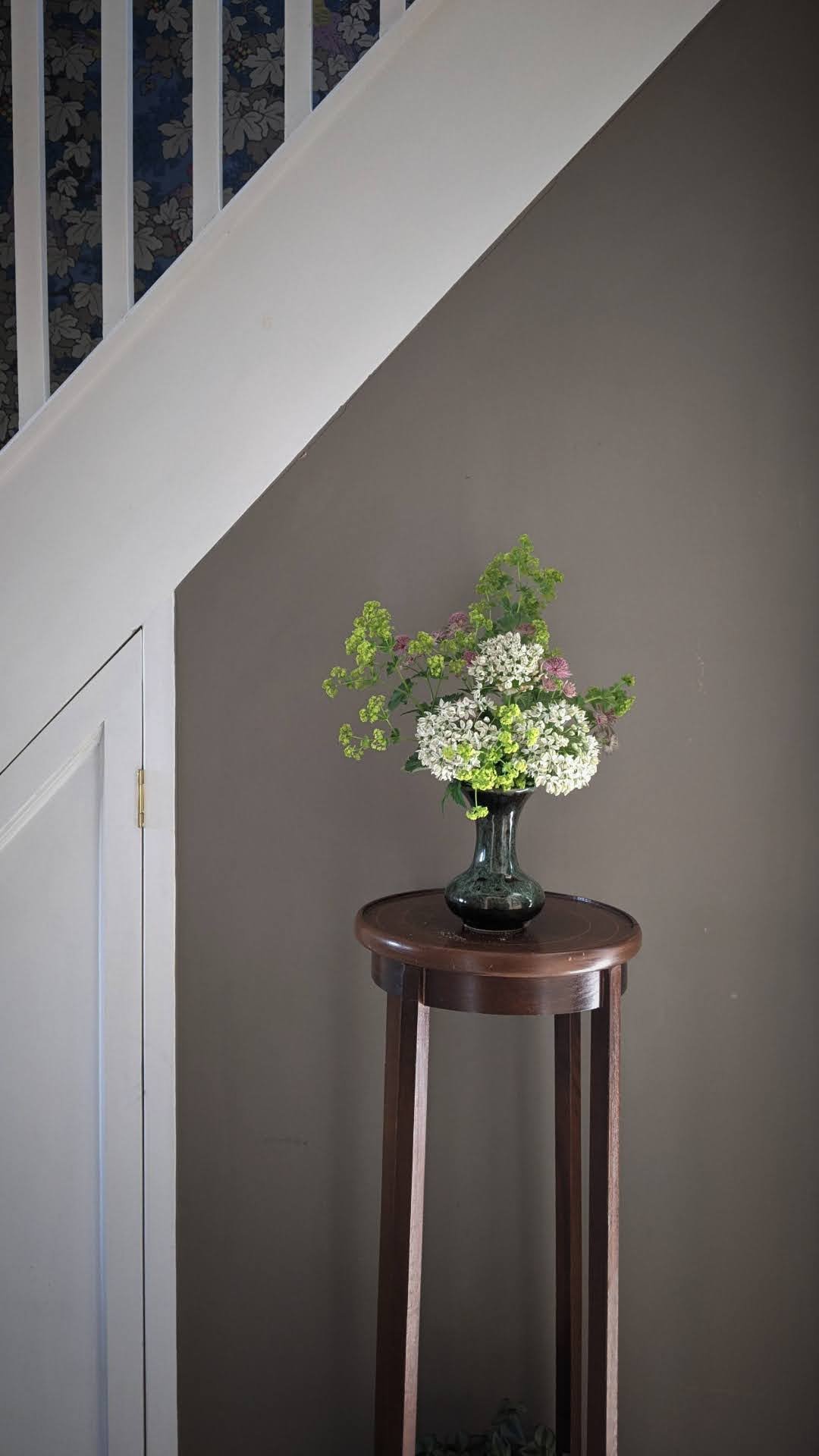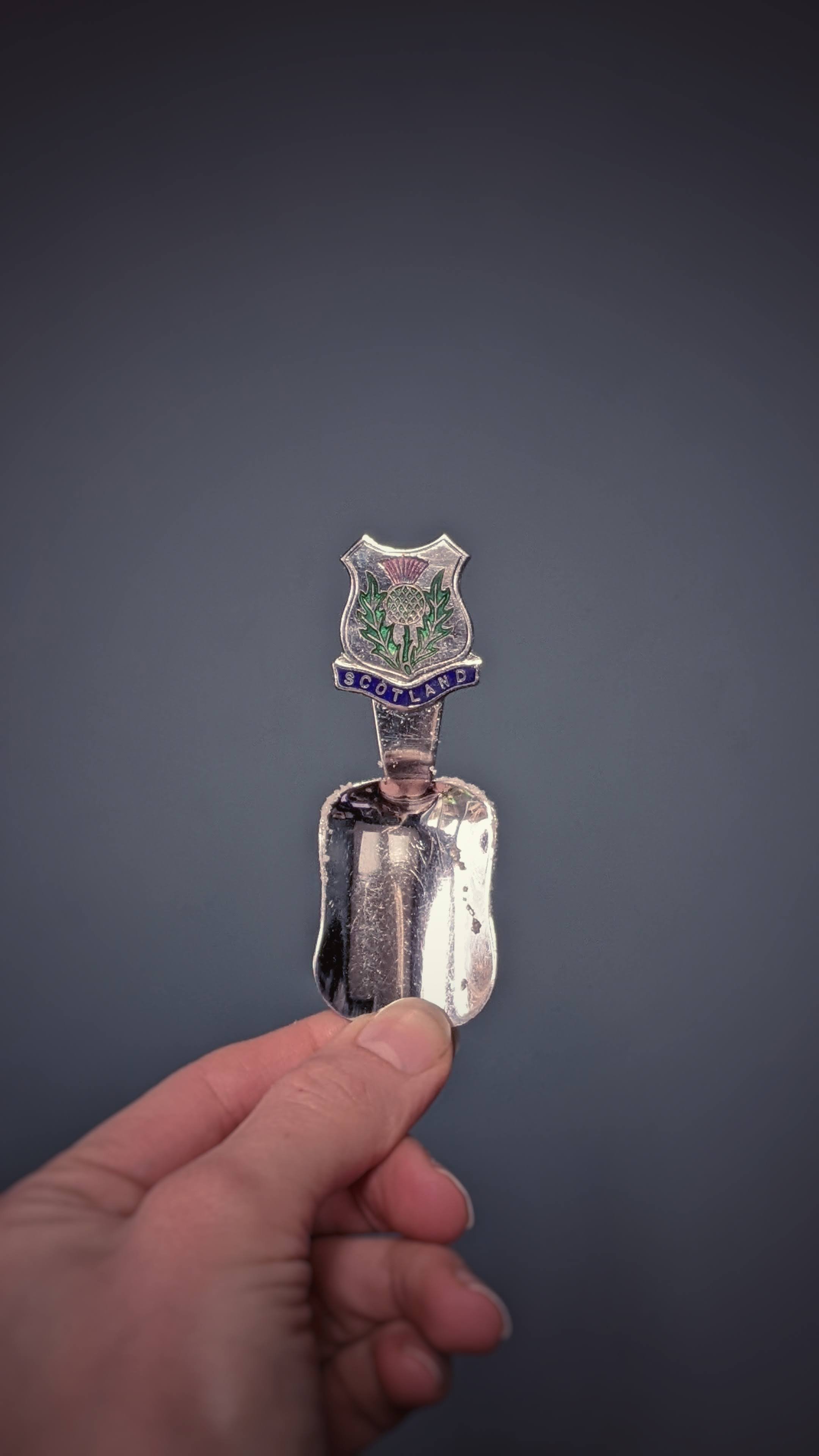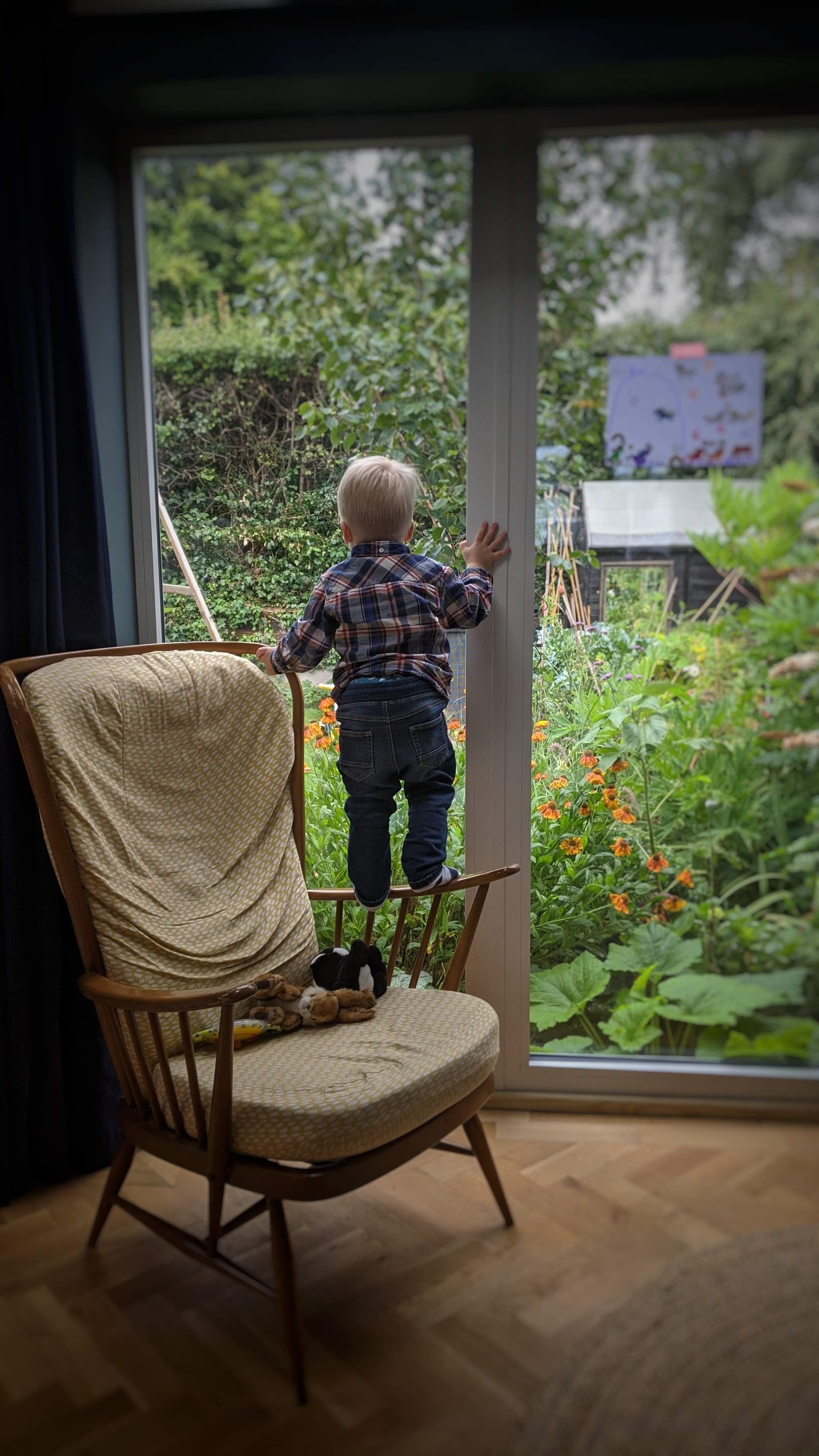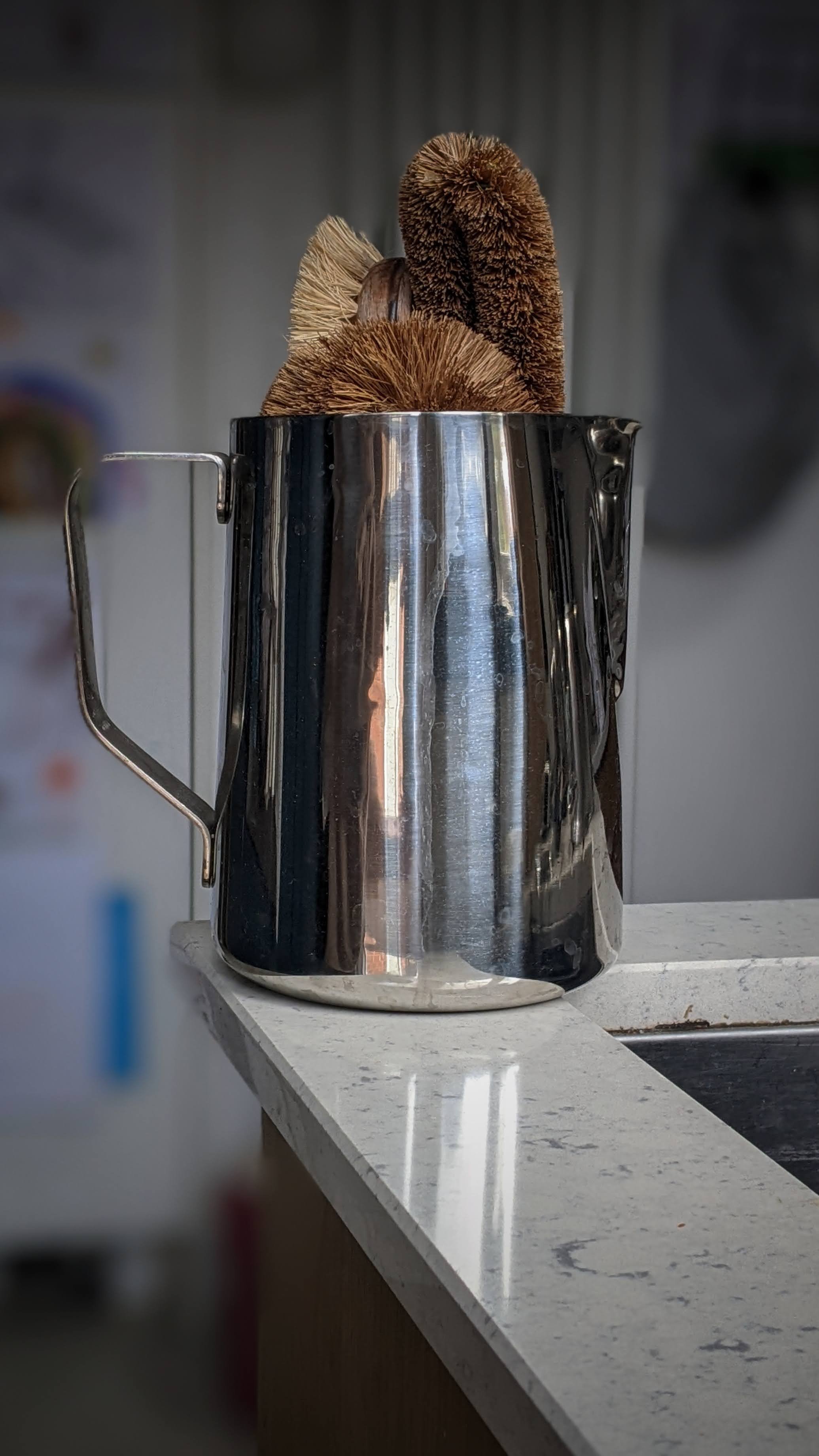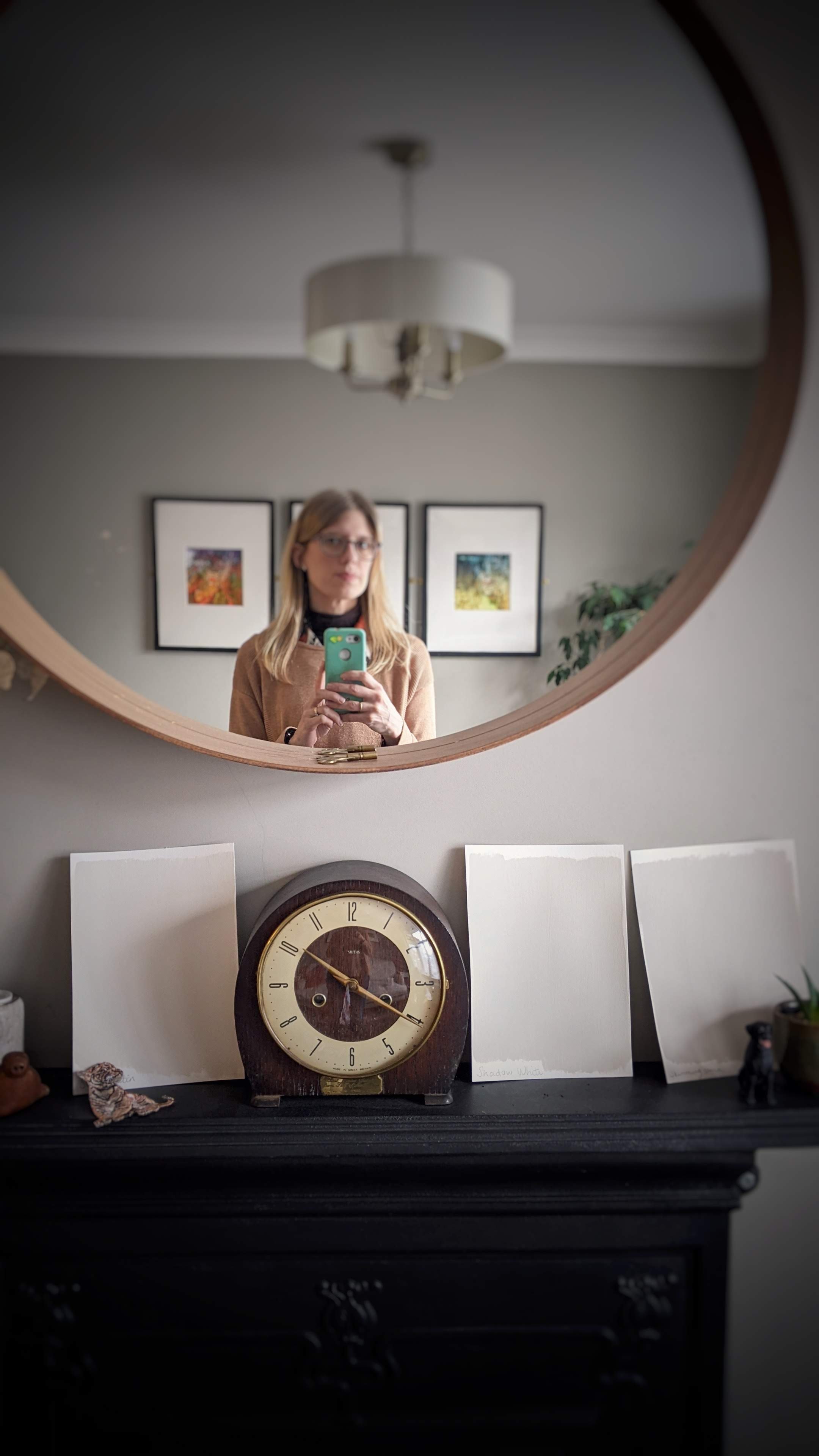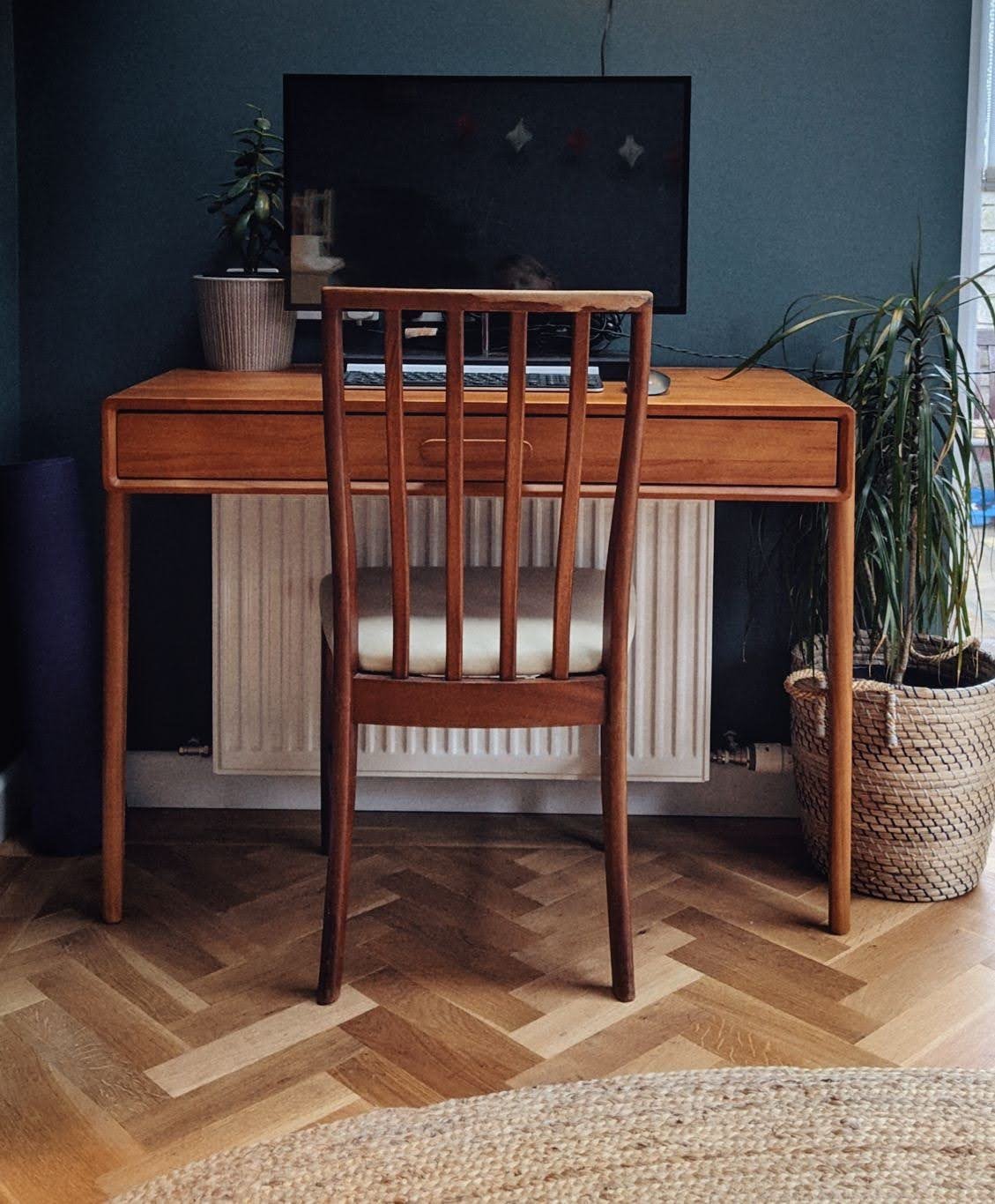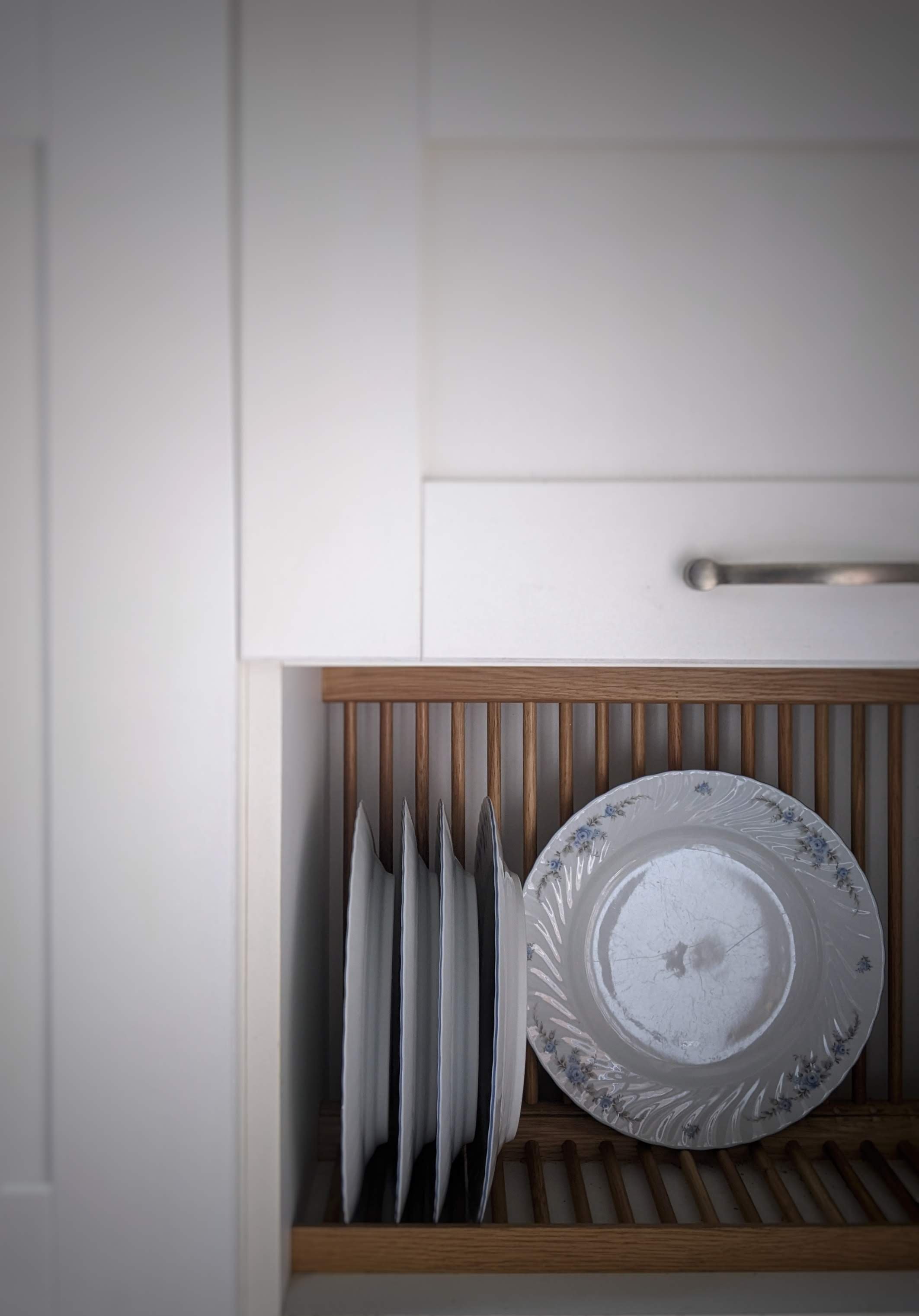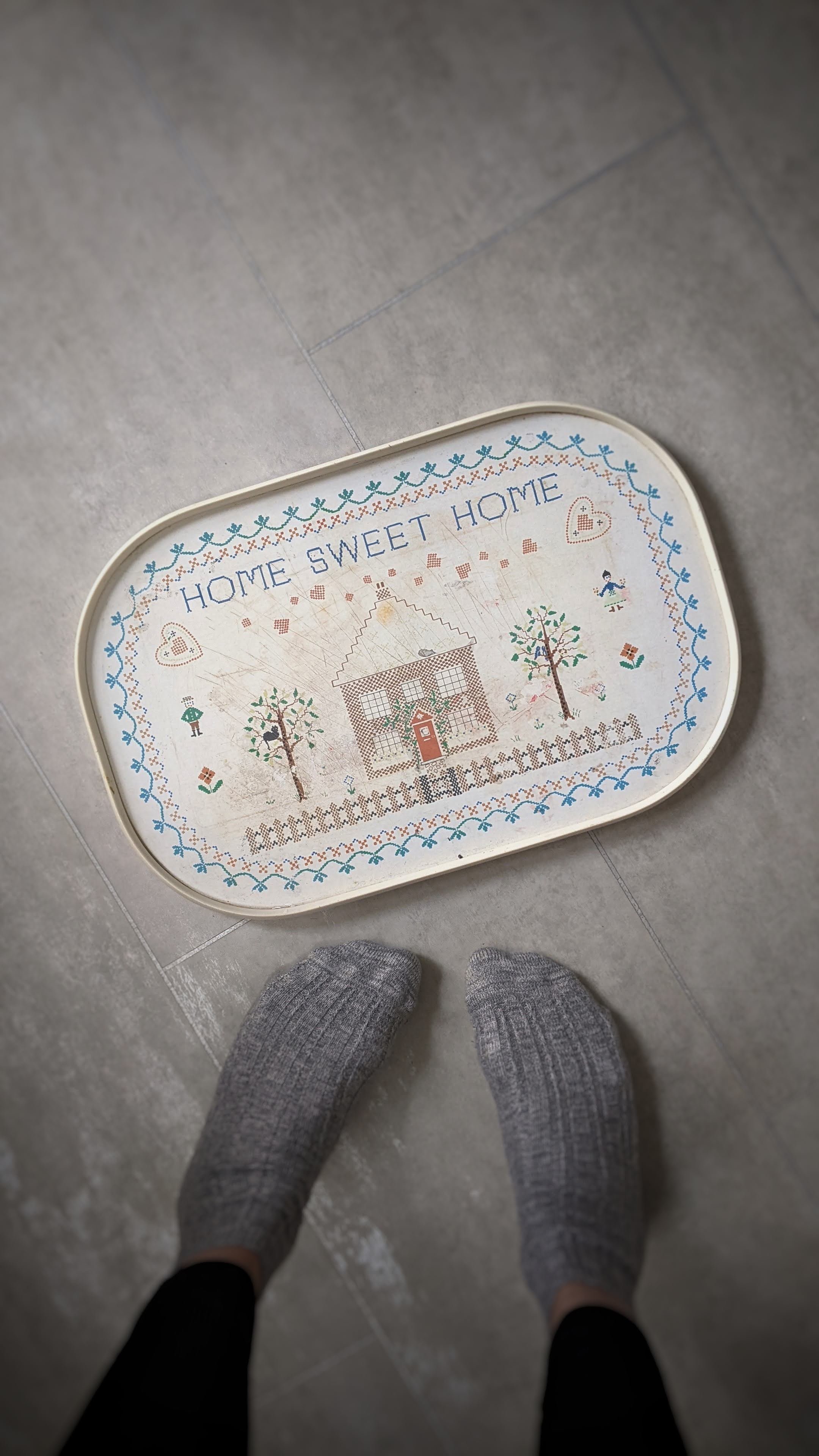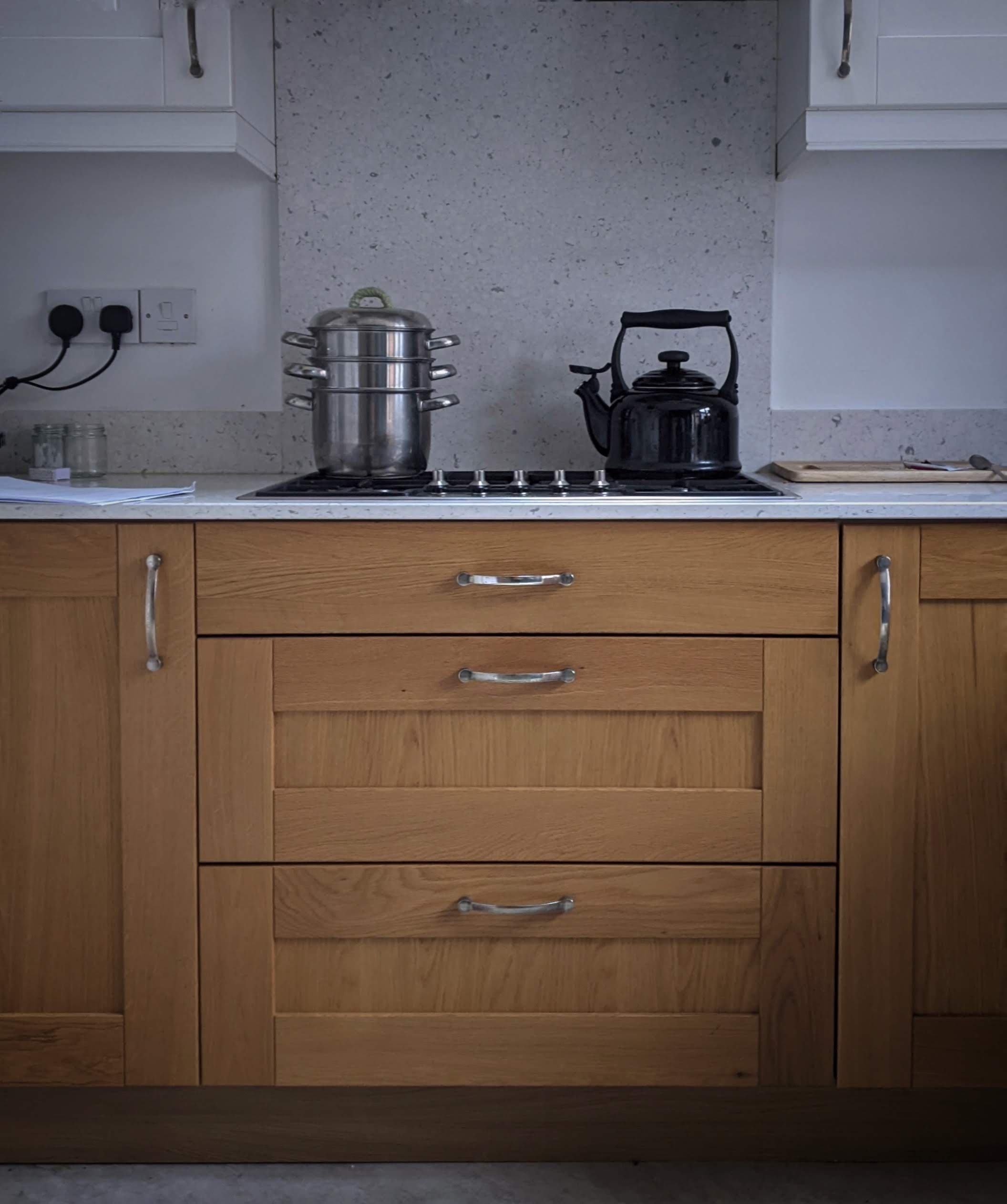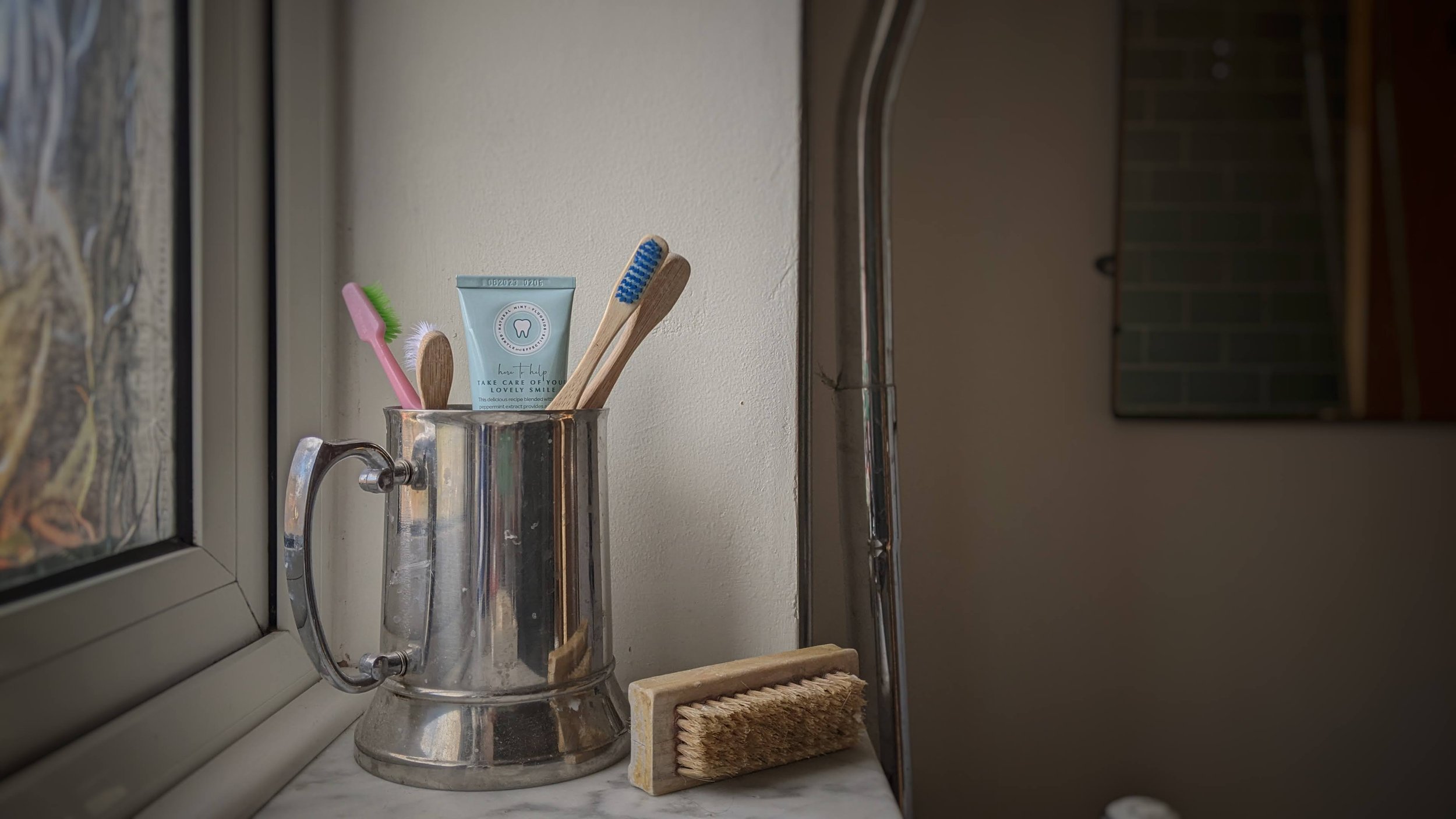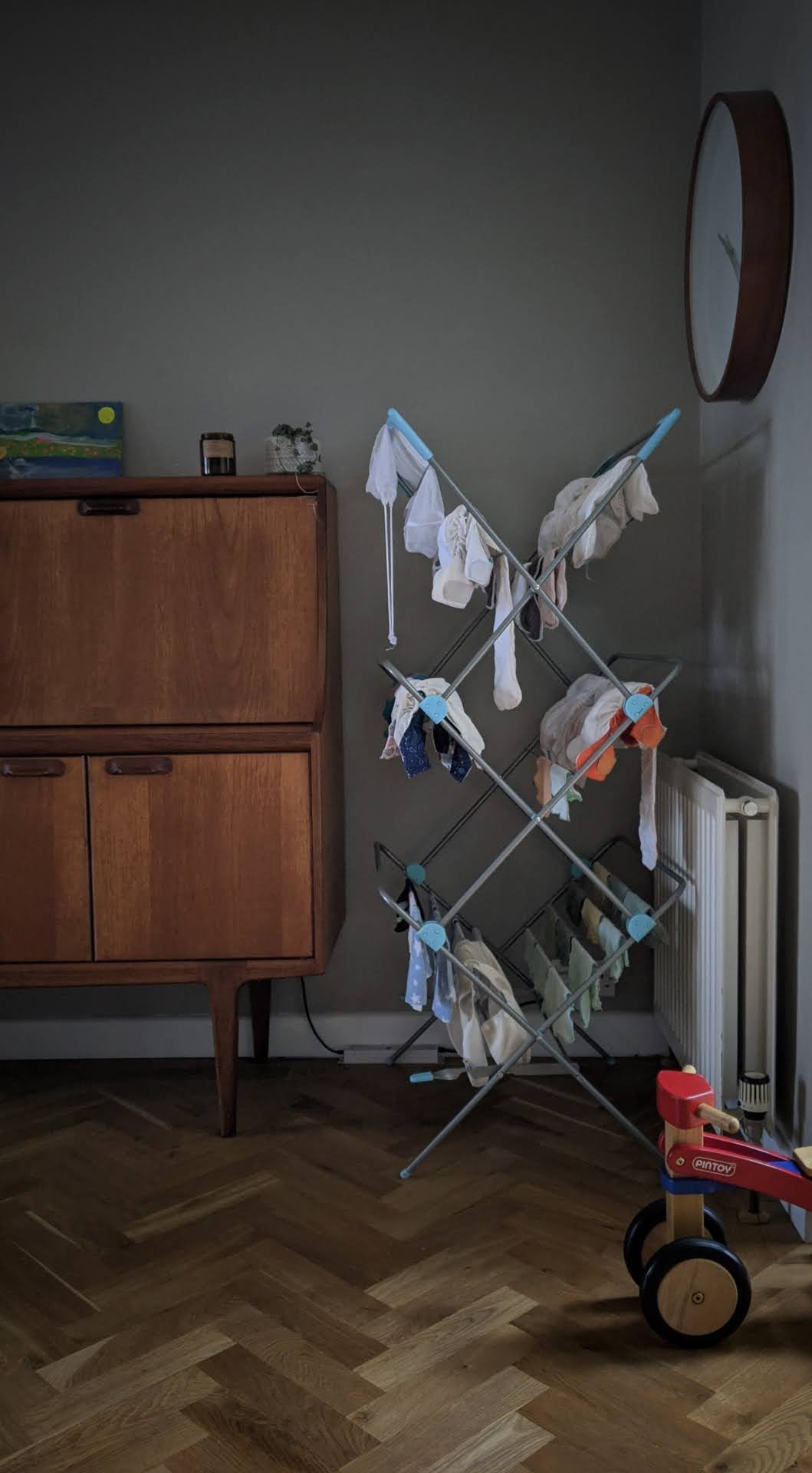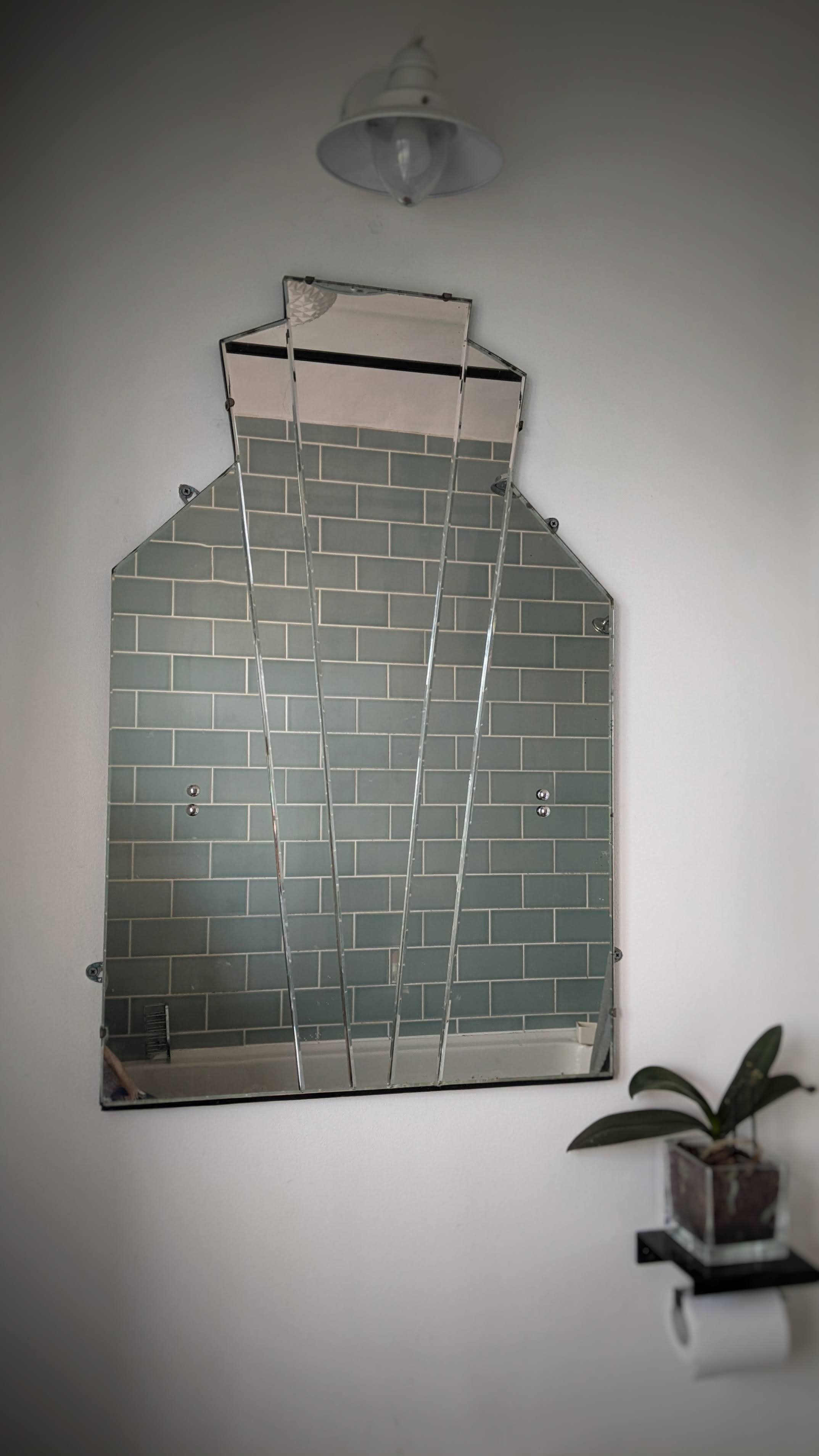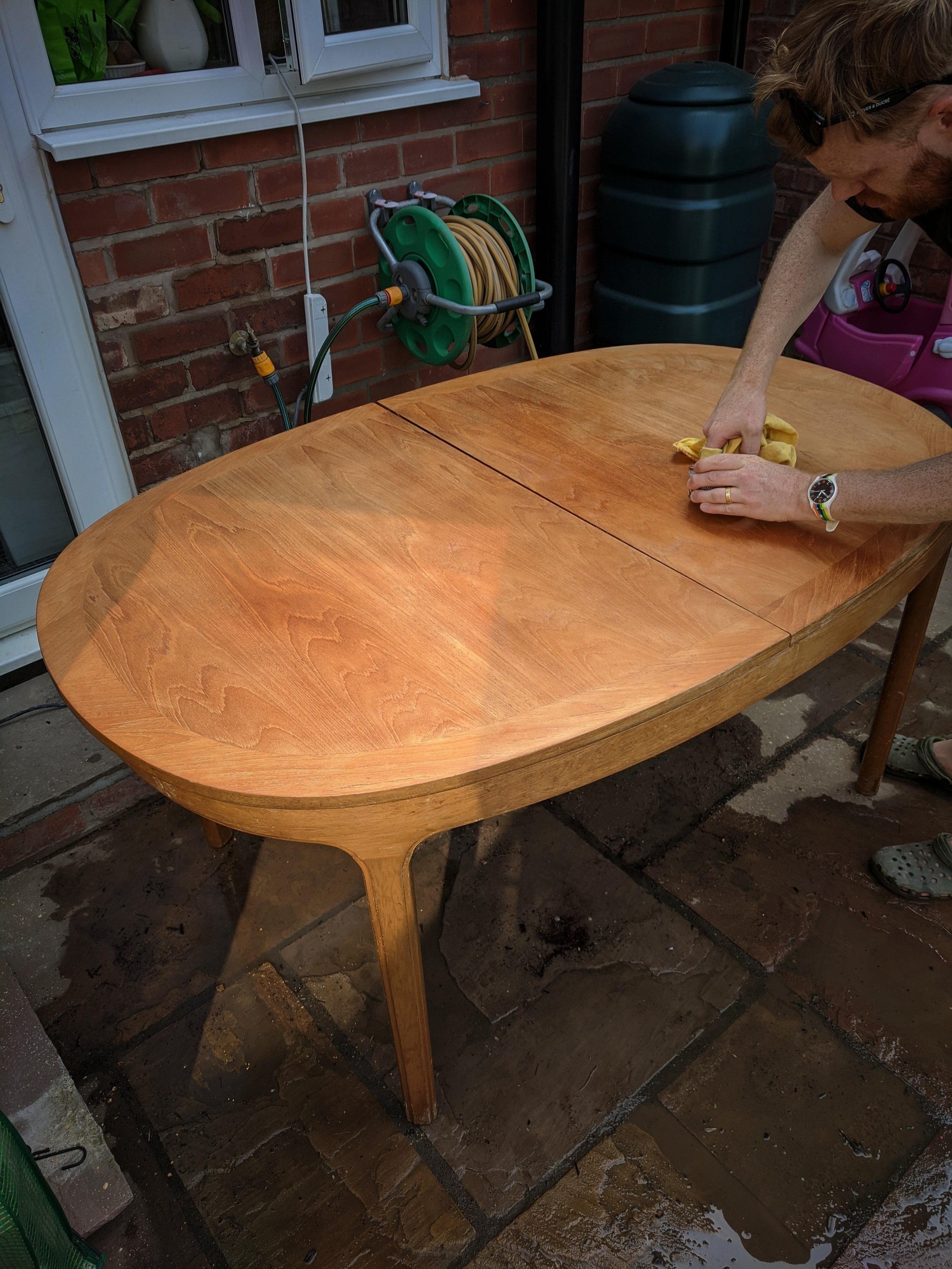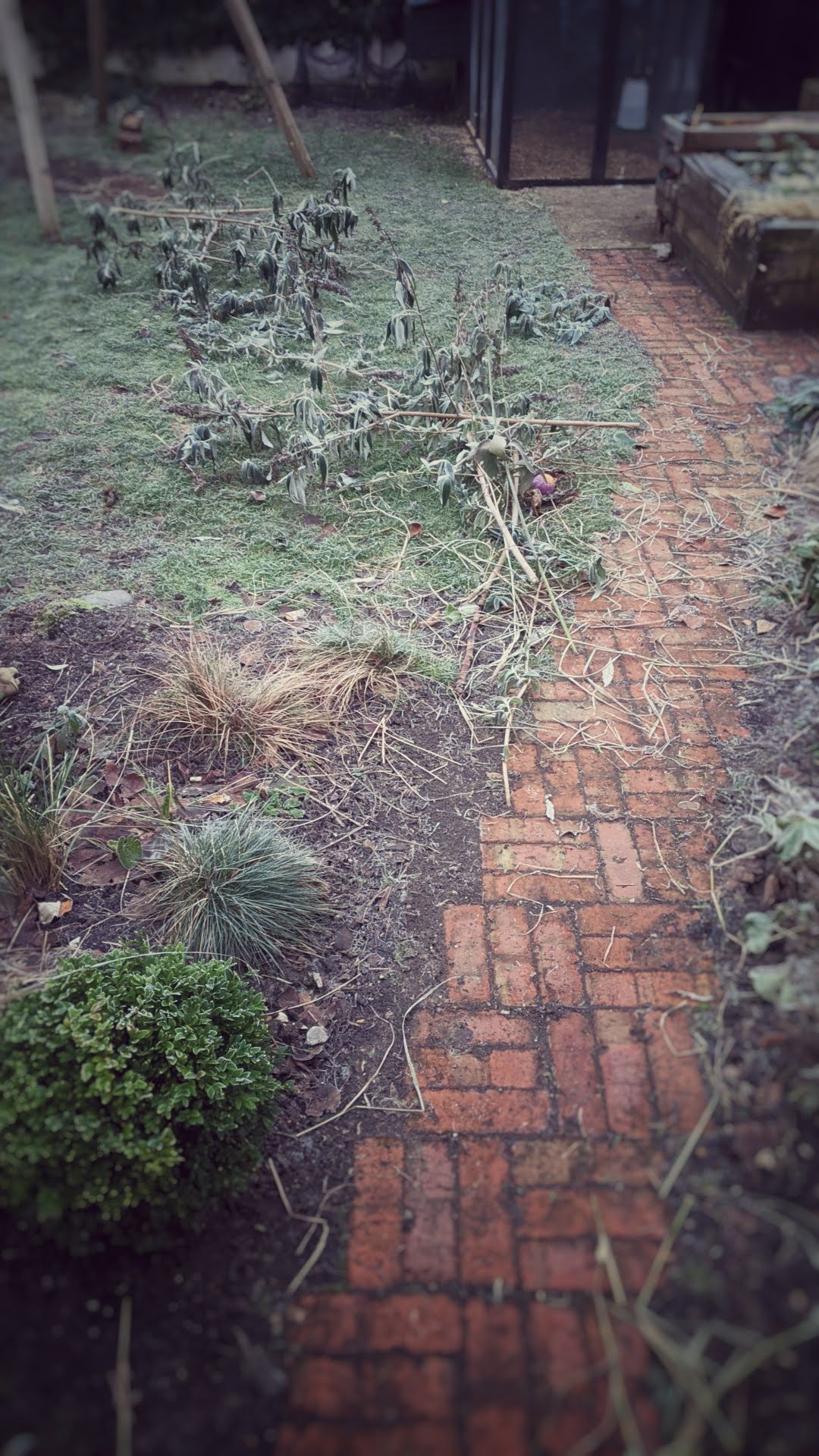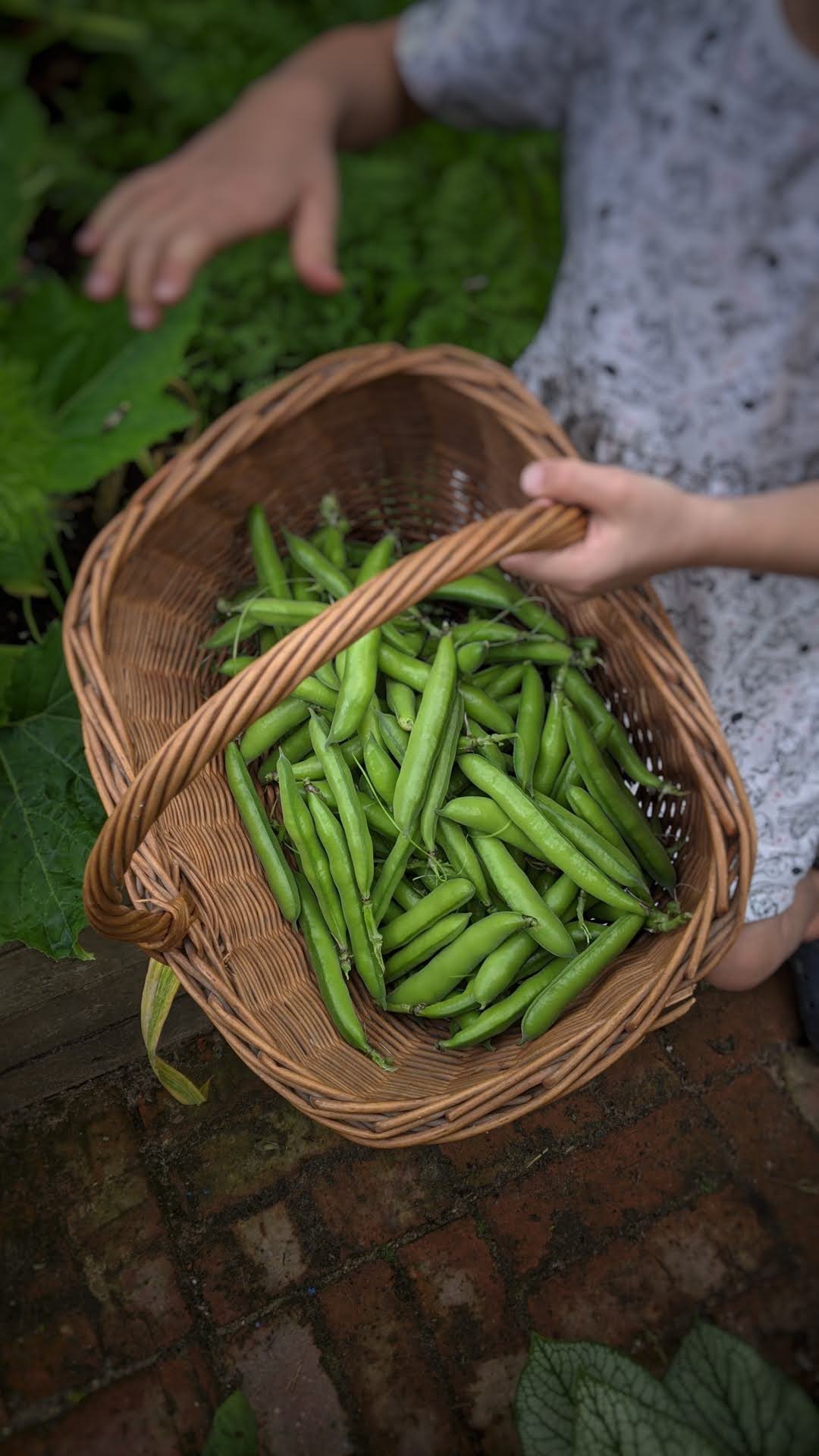Curating a secondhand home
slow interiors for a sustainable home filled with love and stories
My first love in life was a story. An errant strand of wool, a splash of an oar, or a simple willow whip will remind me (even all these years later) of Enid Blyton’s The Secret Island. Recalling it, I find my heart is warm once more. The adventure, the determination, but most of all the resourcefulness of those brave young children mirrored some of my own childhood. I am aware of the great privilege I had in witnessing, through my parents and grandparents, how resourcefulness - the ability to repurpose, reuse and make do, shaped my appreciation of having and caring for things. The stories my late Grandmother shared of her experiences as an evacuee, alongside my own parents’ stories of their frugal upbringings, served to create the perfect storm between falling in love with stories, and falling in love with old things.
Finding Narnia in a cave of wonders
Where I grew up in Essex, the most extraordinary secondhand furniture shop existed - Les and Gary’s - a veritable cave of wonders, or it was to a six year old at least. House-clearance specialists, the heavy dark furniture of the early twentieth century filled their store, and I have happy memories of trips there as a child with my parents and older sister. Perhaps I objected at the time, whatever woes long since forgotten, but I remember its atmosphere completely. The smell of wood and polish, dust motes twinkling like stars to a soundtrack of creaking doors, shuffling feet and the rasping of measuring tapes. I remember the men, the chatter and the sheer anticipation of what treasure may be lurking inside.
To this day I can still recall the curved shape of an ornate brass key I desperately pressed into my palm, knowing with abject certainty that, if I had been allowed to turn it inside the lock of a towering walnut wardrobe, Narnia would be waiting for me inside. I never turned that key, instead watching my mother chose a 1960s chest of drawers which she painstakingly stripped, painted and added detailing with stencils so her piece was one-of-a-kind. Chalk painted furniture may now be in vogue, but back in the 1990s my mother recalls being told she ‘clearly had too much time on her hands’ with her project, nevertheless completing a whole bedroom suite for my sister. At a time when MFI was booming and IKEA had opened its first UK store, this type of upcycling was very uncommon and yet it showed my sister and I from a young age that practical skills are important, an art that should never be lost. (Mum still reminds me often that it is good to be different.) My sister’s bedroom became magical because it was unique and full of love - despite the fact she would never tidy it!
My husband and I shared similar upbringings, our parents all from similar working-class backgrounds. They taught us the true value in shunning wastefulness if, originally perhaps, this was driven by its financial benefits. Our families instilled in us the virtue of frugality (being conscious of how and where we give our money and the quality we can afford with the budget we have), as well as the confidence to give skills we may have no experience in a try, whether that be upcycling, reupholstering or repurposing. Together, we have been able to see items for what they are, imagining what they could become - none more so than when it came to buying our house, previously owned by an alcoholic, smoking power-tool hoarder. (Suffice to say, it required a full, back-to-the-brick renovation.) It is this ability to keep your mind open to possibility that will stand you in good stead for your own slow-interiors journey. That, and these eight practical steps which will secure you success in building your own secondhand home:
1. Keep a list of items you need with you at all times
When my husband and I first moved in together, I used to carry a piece of paper in my purse with a scribbled list of items we needed and would read it every time I nipped into town. It meant I could shop sensibly, check the bric-a-brac aisle for a mixing bowl, or skip the clothes and head straight for the books. As technology has changed, we now use Keep notes or Google Docs on our phones with a shared list of the things we seek. Sometimes this is vague (shelf for shed), sometimes exceptionally specific (small spoon to fit inside the Christmas chutney jar, now used for sugar), but keeping a list has always meant that thrifting trips always feel successful regardless of whether we make a purchase or not, because we’re less likely to come home and say ‘oh, we needed XXX…’ I find Pinterest invaluable in helping me understand the aesthetic that brings me joy. Having a strong sense of style (see my Consciously Renovating a 1930s home Pinterest board) undoubtedly supports my secondhand shopping experience. Why not try creating your own board today?
2. Keep measurements for items with you at all times
Alongside the list of items we are seeking, we will measure the available space and keep that within in our shared notes too, or in a folder of my camera roll. For example, the mantle piece for our fireplace is terribly narrow so many vases and plant pots hang over the lip. Despite the plethora of beautiful, often handmade pots there are around our vintage shops, my list keeps me accountable and less likely to over-consume ‘just in case' it will fit’. When we found our midcentury Stag sideboard in an antiques shop about six years ago, the sketch in my phone notes meant there was no placing a hold, rushing home to check if it would fit, and mad dash back to the shop. It may have taken us two years to find it, but when we did it was a swift purchase, and we’ve never looked back.
3. Bring a tape measure with you (or use an app)
From my experience, the one time you don’t have a tape measure with you is the time for stumble across the item you’ve been desperately seeking: it’s Murphy’s law! I’m not one for apps, but friends have shown me some excellent measuring and spirit-level apps they have on their phone for just those moments. If you prefer to use a real tape measure, a retractable is best if you’re seeking larger items, however they can be weighty and cumbersome to carry long-term. Alternatively, a lightweight dressmaker’s measure can be tucked inside a purse or bag - I keep mine in my handbag, and a retractable measure in the car.
4. Assess the materials carefully
With all shopping, there’s a certain dopamine-hit we get from consuming something new, and shopping secondhand is no exception (I assume this euphoria is a hangup from our hunter-gatherer days.). But with all purchases, it can be easy to overlook certain flaws because the thrill of making a purchase overpowers our rationality. We’ve all done it, thought we’ve found the perfect shirt / toy / saucepan et al, only to realise at home, on careful inspection, that the shirt has a hole in the armpit / the toy doesn’t actually work / the saucepan’s non-stick coating is flaking off. It takes time to make a considered purchase, and as much as it pains me to admit this, I find shopping with my young children (when there is something I need) too difficult to manage alone. I enjoy taking them to vintage shops and charity shops, letting them explore, see what sparks their interest (and understand the rate of consumption our world has grown to), but trying to inspect a piece of furniture whilst stopping them from swinging off a stuffed fox (!), or clambering over an Edwardian chair, is setting us all up to fail. So I’ll leave them with my husband, or we’ll make a family trip of it, tag-teaming the childcare. Any wooden pieces should be checked for signs of rot or woodworm, any fabrics for moth damage (and any ingrained smells!) and washing instructions if available. Check glass for cracks or chips, and metal for deep scratches or dents. Some of these things can be treated, or may be repairable, but you will need to factor the cost and time involved in that before bringing something damaged home.
5. Check the ‘going rate’
If you’ve been hunting for a particular item for a while, chances are you have alerts set up on eBay and are watching to see what prices the pieces you’re after are going for. Sometimes, however, you can be taken by surprise and it is worth having a quick search online before committing to a purchase. If you’re making a purchase from a dealer, it is unlikely a so-called bargain is ever really a bargain - this is their livelihood afterall. It may be that the item, although looking like a certain brand or style, has no badges or labelling and so can’t be sold as an authentic piece and that is why it’s listed at a low price. Ask yourself, if it’s sound and in good quality, do you really need to pay for the brand name anyway? If that is important to you, but you’re still trying to shop sustainably, why not consider seconds (rejected retailer goods due to minor imperfections) or ex-display items. I have both in my house, although it is worth bearing in mind that sometimes that listed ‘discount’ is hardly anything off a new model, so it’s best to check. However, this leads me nicely onto my next point…
6. Haggle
It has become desperately ‘un-British’ to haggle, and it’s not something I had much experience of as a young adult, until I met my husband. I’ve been left with burning cheeks thinking how dare I have the audacity to negotiate on price, until I came to accept that there is often a disparity between an item’s worth (to you) and an item’s price (to the world in general). My husband, however, has always been able to see this and has no qualms about asking for a seller’s best price, or making an offer usually with additional benefits to the seller, such as ‘I’ll take it off your hands now, no need to deliver.’ We’ve bought photographs off the wall in a restaurant once simply by making an offer then and there, and even put in an under-asking price offer on a house with the caveat the seller could leave their unwanted furniture in there and we’d clear it for them. If you’re new to haggling, you might find it easier to start by doing this online - eBay being the place I’ve had the most experience with this. (Simply watching an item on eBay can lead to the seller sending you an offer, opening the channel for negotiations.) Alternatively, if you’re shopping in a store, find a friend who can help you build your confidence. We’re all time-poor these days, so an upfront ‘this is what I can pay, and that’s it’ means neither you nor the seller are wasting time in a convoluted dance over price and worth. Keep in mind the price you’re prepared to pay and remember, the worst they can say is ‘no’.
7. Be prepared to make mistakes (and become a reseller)
Even the most seasoned secondhand shoppers will fall foul at some point in the journey, myself included. I’ve bought a rocking chair that wouldn’t fit inside the room, a microwavable steriliser that wouldn’t fit inside the microwave and returned more jumpers than I care to list because they simply didn’t fit. But the successes have always outweighed those failures, and sometimes those failures have meant I’ve put the shoe on the other foot and become a seller myself. Facebook Marketplace is booming, and if you’re not looking to recoup the expense (perhaps the item was free to you) then try listing it on Freecycle. Every day, when I’m brushing my teeth, I see the piece of marble we hauled out a skip, now the perfect window ledge for our bathroom. When I walk down the garden path to collect eggs from my hens, my feet tread the bricks that once belonged to our old conservatory (and I remember the fun I had wielding a sledgehammer to knock them down!). If you take one thing from this article, let it be this: a mistake does not make you a failure.
8. Have patience, and faith
It takes practice and faith to build a secondhand home. You have to keep faith that the thing that you need is already out there and, if you have patience and the circumstances to wait, it will cross your path. Not only will the item come into your life, but it will almost certainly have the most marvellous story to accompany it too, one that can be shared with others. I can rely on sharing these stories to make people feel welcome in my home, to connect me to this place. My goodness, I am glad to live in a home filled with stories; I am grateful to raise my children alongside these stories too.
Are you new to secondhand shopping, or are you a well-seasoned thrifter? Do you have any advice for others looking to curate a slow, sustainable home that you’d like to share? Please do leave a comment (below) and feel free to share your own stories of thrifting, skip-diving, freecycling adventures too.
